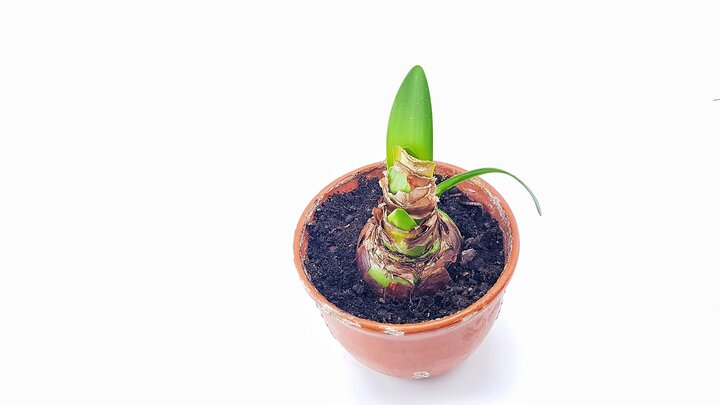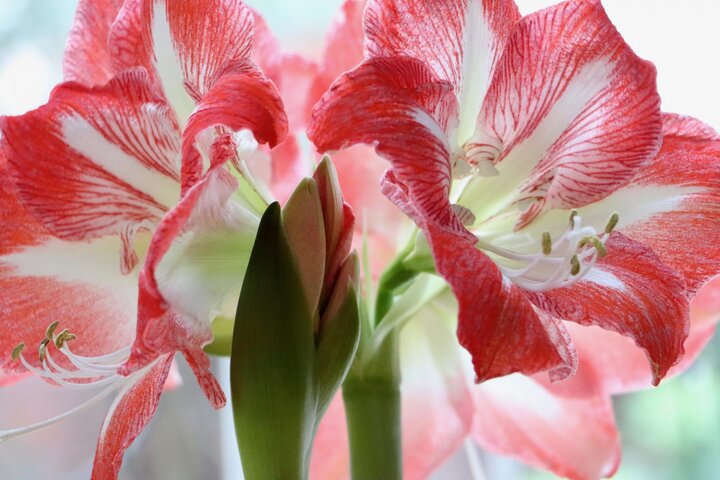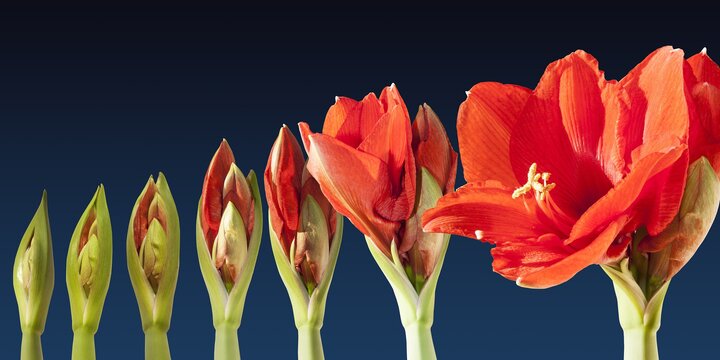Sarah Browning, Nebraska Extension Educator

Amaryllis bulb, a beautiful tropical plant that gives you the flower before the leaves. Image by Pixabay.
Amaryllis is a popular holiday gift plant - maybe you found one among your holiday gifts this year? If so, rest assured Amaryllis are easy to grow and their huge, brightly colored flowers will soon bring a bright splash of color to your home during the winter season. Amaryllis are tender bulbs easily grown in pots, but must be grown indoors in Nebraska except during the warm summer months. The flowers range in color from scarlet to white and are often striped or mottled; their leaves are long and strap-like.
History
The name "Amaryllis" sounds like a botanical name - and it is - but it's also the common name uses for a group of plants in the genus Hippeastrum, Greek for "knight's star". For many years, there was confusion among botanists about the classification and naming of plants in these two genera - Amaryllis and Hippeastrum. Finally, the name Amaryllis was assigned to a group of South African plants, while Hippeastrum went to a similar group from Central and South America. But it ultimately resulted in our use of Amaryllis as a common name that doesn't match its genus.
However, we do grow true members of the Amaryllis genus in Nebraska. One type that is found in many gardens is commonly called naked lady, or surprise lily, Amaryllis belladonna.
The genus Hippeastrum encompasses about 90 plant species, which are native to tropical and subtropical areas of South America, Central America, Mexico and the Caribbean. Fortunately, many plants in this genus bloom in winter and grow well as houseplants in colder parts of the world.
Culture
Often amaryllis sold as gift plants come already potted in a container, but if yours didn't then choose a container that is only 1-2 inches wider than the bulb. The preferred soil mix for amaryllis is high in organic matter; a peat, perlite/vermicullite mixture would work well. Place the bulb in the container so that it is only halfway below the soil. The upper half of the bulb should be above the soil line. Water the soil thoroughly, until water drips from the drainage holes. Allow the soil to dry and rewater sparingly until the plant's roots are well developed, and growth has begun. Overwatering can lead to bulb rots.

Temperatures of 70 to 75° F are fine until the bulb begins to root, and leaves or a flower stalk(s) begin to appear. Then move the plant to the coolest location possible in the house, where it will still have good light. The foliage is weakened by being forced to grow too rapidly under higher temperatures during the period before flowering. During bloom, cooler conditions will prolong the flowers.
Usually leaves appear first, followed by one or two flower stalks. Each stalk can have anywhere from 2 to 6 flowers each. Once the flowers start to fade, pinch or cut them off. Remove the flower stalk by cutting it down to just above the bulb nose, once all the flowers are gone.
Reblooming


In January, bulbs should be repotted if necessary, keeping the bulb in a container only 1-2 inches wider than itself. After repotting, water the plant thoroughly to initiate growth. Bulbs that bloomed the previous year may need a year to recover before they will bloom again.
Images from Pixabay.
- New growth on Amaryllis bulb.
- Amaryllis flowers are available in a variety of red to pink color variations and patterns.
- Opening of Amaryllis buds.
Search Our Archive
Associated Video
Holiday Plant Selection And Care
Nebraska Extension Associate Educator Scott Evans discusses Christmas Cactus, Amaryllis, Norfolk Allen Pine and Poinsettia ornamentals for the holiday season